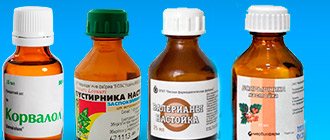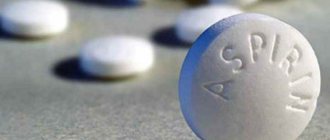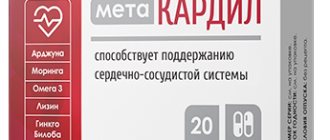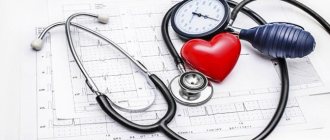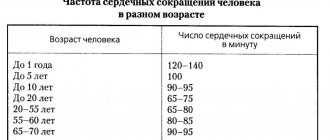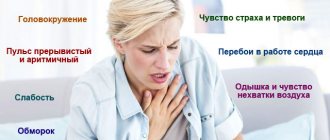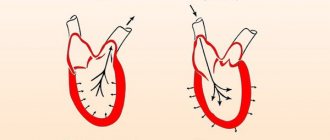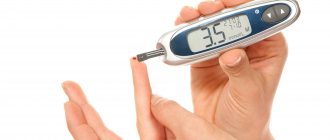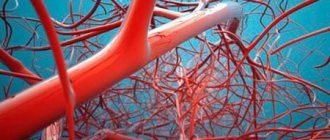Angina pectoris (angina pectoris) is a sharp pain or discomfort in the chest area. The reason for this is a lack of blood supply to certain areas of the heart. Angina pectoris is noted as a leading symptom in coronary heart disease (CHD), which develops due to blockage or narrowing of the blood vessels of the heart. All patients experience approximately the same sensations - pressing or squeezing pain behind the chest, which often radiates to the arm, shoulder, jaw or neck. The pain usually does not last more than 5 minutes and disappears after taking certain medications or relieving tension. However, the duration of the attack is purely individual; some patients experienced pain from 30 seconds to 30 minutes.
Symptoms
When angina occurs, the pain is usually intense and can be relieved by taking nitroglycerin along with stopping physical activity. These pain sensations have characteristic features: a pronounced time of onset and cessation (nature of the attack), occurrence in certain circumstances.
Among the most common conditions for the occurrence of an attack of angina pectoris are active walking (acceleration of movement, climbing a mountain, difficulty in the form of a sharp headwind, heavy load). Also, other physical efforts and significant emotional stress can cause symptoms of angina pectoris. To determine pain arising from physical effort, it is enough to stop the tension. And the discomfort will subside within 5 minutes. The complete elimination of the symptoms of angina pectoris is facilitated by taking nitroglycerin. As a rule, to make a diagnosis, it is enough to take into account the above symptoms and signs: an increase in pain during physical activity, a favorable reaction to nitroglycerin and the nature of the attack.
Folk remedies for internal use
Advertising:
Traditional medicine includes many quite effective options that can help in the fight against angina:
| What do you need | How to cook | How to use |
| hawthorn flowers and sweet clover herb; lemon balm and meadowsweet grass; yarrow grass, oat straw, annual immortelle. In a ratio of 1.5:1:0.5. | 1. Pour 6 grams of herbal mixture with 300 milliliters of water. 2. Heat in a water bath for 10 minutes. 3. Leave to brew for one hour. 4. Strain. | A third of a glass half an hour before meals three times a day. |
| rhizome of valerian officinalis; sweet clover grass; peppermint; corn silk. In a 1:1 ratio. | 1. Grind 5 grams of herbal mixture to a powder. 2. Pour 300 milliliters of boiling water. 3. Leave for 4 hours. It is recommended to use a thermos. | A third of a glass a quarter of an hour after meals three times a day. The last dose is no later than an hour before going to bed. |
| astragalus densely flowered, hawthorn fruits, wild strawberry leaves, horse chestnut flowers; dill fruit, buckwheat flower, chicory root, shepherd's purse herb, rose hips. In a 2:1 ratio. | 1. Grind 8 grams of herbs to a powder. 2. Pour 300 milliliters of boiling water. 3. Place in a warm place and leave for an hour. 4. Strain. | A third of a glass half an hour after meals, five times a day. |
In addition to the above recipes, there are other folk remedies that you can even choose according to your taste.
Will garlic help?
Garlic in folk medicine has long been overgrown with myths that have elevated this product almost to the rank of a panacea.
However, most of the attributed properties are not true.
And yet, garlic can be quite effective in the fight against angina, as it helps cope with atherosclerosis and cholesterol plaques. The cooking recipes are as follows:
- Turn 250 grams of garlic into a paste and mix with 250 grams of honey. Place the resulting mixture in an airtight container and leave for a week. The medication should be taken three times every day, half an hour before meals. Volume - one tablespoon.
- Chicken broth is healthy on its own, but it needs to be used together with garlic to achieve greater benefits. After pouring 10-15 cloves of vegetable into two glasses of liquid, you need to boil the mixture for 15 minutes, adding 50 grams of parsley three minutes before the end. Grind the garlic through a fine sieve and mix again with the broth. Drink half an hour before meals. Volume - 75 milliliters.
Recipes can also be combined. For example, pour a little lemon juice into the honey-garlic mixture, which will increase the healing properties of the folk remedy. To maintain the proportions, you will need 10 fruits, the same number of heads of garlic (it is better to choose larger ones) and 1 kilogram of honey. Volume: 3 teaspoons once a day. It is recommended to take a break of at least one minute between doses.
Causes
The main phenomenon characterizing the symptoms of angina pectoris is an imbalance between the heart's need for oxygen and its direct supply. Due to lack of nutrition of the muscle, its necrosis can develop.
Thus, among the reasons for the lack of oxygen supply to the heart, local disturbances in blood flow are often identified. It can be triggered by chronic narrowing of the lumen of the artery supplying the heart due to atherosclerotic plaque. Angina also occurs due to a sharp and prolonged spasm of the heart vessels. As a result, one part of the heart receives less oxygen than it needs to function properly. During physical activity, this deficiency is felt especially strongly. This is the reason why the vast majority of acute attacks of angina are the result of exhausting and difficult work or stress.
Folk remedies for external use
Advertising:
In addition to various decoctions, solutions, teas and other medicinal drinks, you need to pay attention to traditional medicine products that are intended for external use. The first recommended option is fir oil when experiencing or preventing an attack of angina. Using it is quite simple - you need to rub 2-3 drops of the substance into the heart area. The procedure must be carried out at least 3 times a day. A greater effect from fir oil is observed when the patient is dependent on sudden changes in atmospheric pressure.
Peppermint oil, the components of which are also used to make medicinal drinks, can also be useful. You need to rub the substance into the temple area - at least 2 times a day.
The older a person is, the more complete his medical history is, so it is not uncommon for other pathologies with the cardiovascular system to develop against the background of angina.
Massaging your fingers can help prevent their rapid growth. For example, to achieve a stable heart rhythm, you should gently treat your little finger.
If a tingling sensation occurs in the area of the affected organ, you need to clasp your left wrist with your thumb and forefinger and massage this area with measured circular movements.
Diagnostics
Not all pain in the chest or heart can be called angina. If it lasts less than 30–40 seconds and is eliminated by taking a deep breath or changing body position, there is no need to worry about angina. To make such a diagnosis, the doctor must analyze your complaints, find out the symptoms and the circumstances of their manifestation. In order to exclude concomitant diseases when diagnosing angina, a number of medical tests are carried out, including an electrocardiogram (ECG) in two states (rest and stress), a stress test, blood pressure measurements and x-rays of the coronary arteries.
Thanks to an ECG, the doctor can determine the electrical impulses of the heart, and with them the symptoms of angina pectoris. They show the absence or presence of ischemia (lack of blood supply), characteristics of changes in heart rate and some other parameters. To get a complete picture of cardiac activity, the specialist compares the ECG readings after exercise and at rest, and then decides on the need to treat angina pectoris.
A comprehensive stress test makes it possible to diagnose angina pectoris and assess blood flow in the heart muscle. A small amount of a radioisotope (usually thallium) is used, which is injected into a vein by microinjection during physical activity. Using a special device, the doctor monitors the distribution of thallium in the heart. Uneven concentration or absence of this element in one or another part of the muscle reveals areas of insufficient blood supply.
The most accurate way to determine angina pectoris (angina pectoris) is an angiogram, or x-ray of the coronary artery. The catheter is placed in an artery in the groin or forearm, and then it moves along the bloodstream to one of the heart arteries. Next, a radiopaque liquid is injected, which makes it possible to observe changes in the arteries under study, diagnosing angina pectoris.
Should angina pectoris be treated at home?
Angina pectoris is a disease caused by insufficient blood supply to the heart, which develops due to excessive cholesterol deposits on the walls of the arteries. Due to such complications, there is a high risk of an attack, accompanied by pain in the chest, nausea and vomiting, which contributes to difficulty breathing and weakening of the body.
If you ignore the need to treat angina, coronary heart disease (CHD) may develop.
Not all people have the opportunity to constantly go to the hospital to receive recommendations and prescriptions that will help cope with pathology. To achieve results in the fight against the disease, you need to act independently - at home.
In addition to the preventive measures prescribed by the doctor, it is important to consider: what medications can be used, how effective folk remedies are for relieving symptoms, what to take in case of serious manifestations of pathology - all this will help avoid deterioration of health and cope with angina.
Treatment
Successful treatment of angina is usually associated with a reduction in risk factors that can cause cardiovascular problems. These include: high blood pressure, excess cholesterol, excess weight, smoking. The doctor will prescribe you all the necessary medications to bring your blood pressure back to normal, suggest the right diet and help you create a physical exercise program for the treatment of angina pectoris.
Currently, mononitrates, dinitrates and trinitrates are used to relieve the symptoms of angina pectoris. Their mechanism of action is dilation of the blood vessels of the heart, which increases the flow of oxygen and reduces tension in the myocardial wall. Undesirable effects of nitrates in the treatment of angina include headache, decreased blood pressure, facial flushing, dizziness, and insensitivity to certain doses of the drug. Beta blockers, which reduce the strength and frequency of the heartbeat, and calcium channel blockers, which prevent vasospasm, are also used.
In cases where the symptoms of angina are severe and medications are not able to help, surgery (in the form of coronary artery bypass grafting) and balloon angioplasty are prescribed. Coronary artery bypass grafting involves the implantation of a blood vessel into a blocked section of the coronary artery. In this way, blood flow in this part of the heart is restored using a bypass. Angioplasty is an operation to treat angina using a catheter with a small balloon at the end. It is injected into the axillary or femoral artery and then advanced to the site of narrowing of the coronary vessel. Here it quickly inflates or stretches, eliminating the spasm.
Particular attention needs to be paid to the treatment of unstable angina, which can occur even in the absence of strain. Such chest pain does not have predictable boundaries of onset, unlike stable angina, and does not need a reason for its occurrence.
Classification
Simplified, angina can be divided into several types.
Stable angina - manifests itself under load; the lower the myocardial endurance and the earlier pain appears, the higher the functional class from I to IV.
Unstable angina - may occur for the first time after a heart attack.
Spontaneous angina - with spasm of the coronary arteries, does not depend on the load.
Microvascular angina - when the microcirculatory system is disrupted.
Prevention
Basic methods of prevention and treatment of angina:
- absolute cessation of smoking and alcohol;
- long walks in a relaxed manner, physical activity within reasonable limits in accordance with doctor’s prescriptions;
- blood pressure control;
- You should follow the diet prescribed by your doctor, limit the consumption of animal fats and salt, increase the use of vegetables, vegetable fats and fruits in your diet;
- detection and appropriate treatment of diabetes mellitus, control of blood glucose levels;
- absence of unnecessary emotional stress.
If you are bothered by regular pain in the chest area during physical activity, this may be a manifestation of stable or unstable angina, which is treated by specialists at our clinics. You should consult a doctor, as each attack of angina inevitably worsens the condition of the heart muscle. You can get professional help at one of our clinics in Moscow. Make an appointment with us by phone +7.
How to treat unstable angina?
Unstable angina according to the Braunwald classification is the most dangerous period of the disease, during which the risk of developing coronary artery disease is high. Therefore, its treatment needs to be given more attention, observing the following requirements:
Advertising:
- adhere to strict bed rest;
- use medications to relieve pain;
- take medications to stabilize the heart rhythm.
As with stable angina, in the case of non-standard angina it also makes sense to use nitrates. They will help cope with pain symptoms without having a negative impact on blood pressure and pulse.
Medicines are also used, the purpose of which is to reduce the organ’s need for oxygen, that is, beta blockers. Due to them, blood vessels dilate and the heartbeat slows down.
To eliminate blood clots, the patient should take blood thinners. Disaggregants are suitable for this purpose. They inhibit the ability of platelets to stick together, which prevents the formation of blood clots.
Also, the course of treatment must include proper nutrition, the requirements of which are as follows:
- Eliminate fatty, salty or smoked foods from the menu. Can only be steamed or boiled.
- I'll have to give up sweets.
- Alcohol, especially strong alcohol, can negate all treatment, so drinking such drinks during periods of unstable angina is prohibited.
The daily diet should be “green” - a maximum of vegetables, fruits, cereals and fiber.
Final Recommendations
The effectiveness of some recommended drugs may be artificially inflated. For example, ignorant people are often advised to take Validol, Valocordin, Papaverine and other similar products that do not contain nitroglycerin. In fact, such drugs are close to placebo, since the effectiveness is only 40%. Nitroglycerin has almost absolute effectiveness, so there is no point in replacing it.
This is especially important when dealing with an attack. It is worth remembering forever that there is no need to try to cope with the angina crisis with Validol, because if you waste time and do not relieve the spasm, a heart attack may develop.
Therefore, you should not look for unnecessary replacements for Nitroglycerin. Taking the drug is quite simple - put it under the tongue and wait for it to dissolve. There is no need to suck, chew or chew the tablet.
When using Nitroglycerin in the form of an aerosol, it is important to consider that it should be injected while holding your breath. The substance must not be inhaled under any circumstances. After injecting the drug, you must immediately close your mouth.
How will breathing exercises help?
Breathing training can improve blood flow, reducing the risk of developing diseases. Therefore, if you want to get rid of angina pectoris at home, gymnastics can rightfully be considered one of the first measures that need to be taken for successful treatment.
In addition to the fact that breathing exercises can improve blood microcirculation by dilating blood vessels, they also increase the delivery of oxygen to organs and ensure its unhindered flow to important tissues of the human body. This reduces the load on the myocardium, which helps reduce the risk of attacks. The main recommendations for implementation are as follows:
- position - the back is straight, nothing presses on the chest;
- breathe deeply, slowly, measuredly;
- one of the classes should be based on the principle of delay in the “inhale-exhale” cycle.
Gymnastics can include various exercises - there are many named techniques.
Training should be done on a regular basis over several weeks.
This is the only way to achieve the desired effect, which will become noticeable 3-4 months after the start of the exercises.
